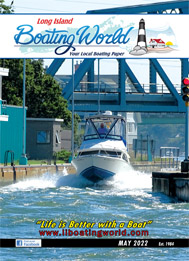
Piloting a Speedboat … Ready, Set, Go … But not too Fast !!! … Thinking back to 2020 when the pandemic reared its ugly head, not many people thought it would lead to an economic boom time for boat sales. In part, this was driven by the fact that outdoor activities were safer than indoor venues; and because recreational boaters generally head out to sea with family and trusted friends who were known to follow the prescribed pandemic safety protocols (masks, gloves, and social distancing). When we fast forward to 2022, this trend is expected to continue because many outdoor enthusiasts are turning to recreational boating … While this might sound surprising, the facts show that the global recreational boating market size is projected to grow from USD 16.4 Billion dollars in 2021 to 23.6 Billion dollars by 2027. These statistics include power boats, sail boats, and paddle crafts … It’s Time to Get Onboard … I define a Speedboat as any vessel with lots of horsepower, trim tabs, and a planing hull. As the Skipper, the first thing to do once the crew is on-board is to ask everyone the following questions …1. Are they prepared for the day’s activities? … 2. Does anyone onboard have an illness? If yes, ask if they are taking any prescription drugs … 3. Is any crew member or guest feeling overly stressed … 4. Has anyone been drinking within the prior eight hours … 5. Is fatigue a factor for anyone on board … 6. Nutrition. Is everyone adequately nourished and hydrated … 7. If you are going on a cruise in a Speedboat wear a PFD that is rated for high speed boating … 8. Most Importantly … Don’t Drink and Drive. In addition, be aware that Federal Law is very clear regarding use of products made or derived from hemp, including cannabinoids. This Federal prohibition is not impacted by any state or local laws allowing for the use of medicinal or recreational cannabinoids. … It’s Time to Get Going … 9. Everyone onboard is a watch stander … While underway keep a sharp lookout for changing weather and sea conditions, crossing and overtaking vessels, water depths, restricted speed zones, buoys, and floating debris … Additional High Speed Safety Tips … 10. Avoid sharp turns …11. Be certain that the person at the helm is connected to the engine’s kill switch at all times, and confirm it is operational … 12. Once up to speed make sure the crew is seated, have a firm grip while in the seat, and know how and when to perform the tasks they need to manage … 13. Monitor and avoid getting into situations that require rapid turns … 14. Adjust your speed to accommodate the prevailing sea, weather, and boat traffic conditions … 15. Be aware that getting on plane and up to speed in a high speed powerboat takes a lot of horsepower. When you get on plane you might choose to slow down a bit so that you properly manage fuel consumption and minimize pounding through waves. In addition, remember to use the trim tabs to execute minor adjustments to the trim of your vessel. This attention will allow the boat to stay on plane … 16. Manage Your Speed … Constantly maintaining full speed ahead is not a good way to operate a speedboat. Smart Skippers run the boat in a way that complements prevailing boat traffic, plus sea and weather conditions. This translates into making sure the crew members are keeping a sharp lookout and confirming that the Skipper has heard and understood their reports … 17. The U.S. Coast Guard is asking all boat owners and operators to help reduce fatalities, injuries, property damage, and associated healthcare costs related to recreational boating accidents by taking personal responsibility for their own safety and the safety of their passengers. Essential steps include: wearing a life jacket at all times and requiring passengers to do the same. Never operate the boat while under the influence (BUI). Successfully completing a boating safety course; and get a Vessel Safety Check annually from the local U.S. Coast Guard Auxiliary Flotilla, The United Sates Power Squadron, or your local boating agency’s Vessel Examiners. The U.S Coast Guard reminds all boaters to “Boat Responsibility”…18. For more tips on boating safety visit uscgboating.org or go to my website at www.boatopsandsafety.com and click on Safety Tips. Or, visit https://www.uscgboating.org/recreational-boaters/ .19 … New York States Safe Boating Requirements … Beginning on 1/1/2020, Brianna’s Law requires all operators of motorized watercraft to complete a state-approved boating safety course by the year 2025. This mandate will help ensure that all NY boaters have the basic level of knowledge required to safely operate a boat in New York State waters. Being educated helps ensure that everyone can enjoy the sea life and all of the adventures that come with it, and do this safely for yourself and for others on the water. Named after an 11-year old girl who died tragically in a boating accident in 2005. The requirements of this law would have easily been avoided with proper boating safety knowledge. Brianna’s Law features a five-year phase-in process that aims to get all boaters in NY State certified to operate a motorized watercraft. 20 … Under this law, new boaters of all ages will be able to easily obtain the knowledge that is required to carry a New York State boaters’ card that allows you to operate a boat in New York State. Card holders must be at least 10 years old and accompanied by an adult. To operate a PWC in New York you must be 14 and have a valid boaters’ card.
